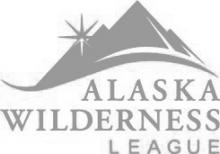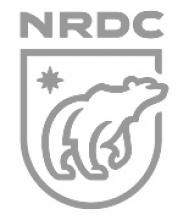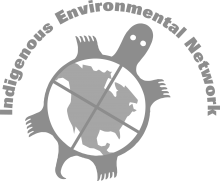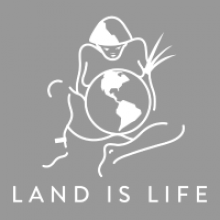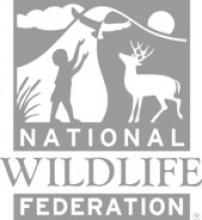When I returned from deployment in 2013, I wanted to get as far away from people as possible. I wanted nothing to do with traffic, crowds, societal courtesies — or really anyone.
My dream was, and still is, to move to a very remote location so far off any main roads that I couldn’t hear a neighbor’s dog bark and no one would come to visit me.
I didn’t want anyone to speak to me nor did I want them to expect a response. I warned people that I “wasn’t safe for public consumption” as a way to let them know that I didn’t give a rat’s left nut if I offended anyone when forced to converse.
I ached for solitude and for what I know now as an ever-elusive sense of peace I wasn’t sure was possible to find.
Forcing myself back into society unraveled me each time I returned from deployment. I had an intimate understanding of why the veterans’ suicide rate is high. Following the first tour, I fought suicidal urges by throwing myself into veterans’ advocacy and founding a national level nonprofit organization, American Women Veterans.
A sense of purpose and a passion for my work seemed the cure.
I thought I had all the answers but then I returned from my last deployment in 2013, with far better resources available to us than in 2006. For months, the urge to kill myself wasn’t an isolated incident, it was an ever-present need. The only time I felt any release from that yearning was when I finally decided to give in to the urge.
I thought about my family, friends, the nonprofit organization and even all of the people my death would impact. I’d feel guilty about what it would mean, but I also thought my suicide would be the best thing for my organization — it might finally receive the support and funding it needed.
Despite all the thoughts to the contrary, I ached for peace. I was in so much mental and emotional pain for months on end. And nothing I tried, with all the resources available to me, worked … except the decision to finally end it all.
I decided to tie up loose strings before tapping out and, in the beginning of 2014, I set a date for August. Using a free airline voucher I got on the way to pre-mobilization, I laid out how I would walk off into the Tetons to finally find my final solitude and peace.
In war, I had the most life-affirming experiences. A car packed with explosives hit our truck in Helmand in 2006. In 2013, my team and I lay in the dirt as near-daily rockets rained down on us at Forward Operating Base Shank. But nothing back home made me want to live.
Every thing, every situation and every person annoyed me except my military buddies. I resented it all — society’s mindless materialism, the superficiality of our culture, every image and commercial on T.V.
Every time I heard a person complain about something trivial, I wanted to grab them by their collar and make them bleed. I could’ve only made them understand if I could have downloaded images and experiences from my brain to theirs.
I wanted everyone to hurt the way I hurt. I wanted to rage at the fates for not being able to stop the same hurt in everyone I served with. With nowhere for the guilt, shame, rage and pain to go, I turned it inward.
Many have asked me how I spent months suicidal and yet survived. Everyone wants to know what the antidote is to death’s siren song. I don’t have it. There is no one-size-fix-all solution to stop the yearning to kill yourself. There was no single defining moment I can recall — except the one where I decided to put it off until I’d tied up loose ends — only a series of experiences where everything I saw around me and felt through my body was heightened.
If I have to come up with an answer about my path to self-discovery, I would say nature, spirituality, and community, but nature was the only doorway through which I was able to experience the other two. During the months that followed, a series of events happened that would forever change me but despite everything, I thought about ending my life on a daily basis.
Some would say I lost the mental capacity to care for myself or make my own decisions but most that knew me during this time, would say otherwise. No one had any idea and those I told didn’t think I was serious. I began to honor every suicide I heard about by saying a prayer that ended, “At least [he/she] is not in pain anymore.”
It was also something I wrote in my suicide letter to my family. “Please know, I am not in pain anymore.”
Everything I thought I understood or believed about suicide, began to change. The workshops made me realize I still had work to do here. They gave me a glimpse of what it meant to feel “home” inside myself. But after I left the meditation retreat, I feared I’d lose that connection and never be able to find it again.
It wasn’t until the summer of 2015 that I finally felt I had truly made it home.
Imagine a place untouched by development, teeming with wildlife and everywhere you look, there exists a preternatural beauty in the land and streams that run through it. Try to picture, if you can, a place where brutality is survival rather than inhumanity and where no living thing, even in the throes of death, has any self-pity.
These places exist and one of them is the Arctic National Wildlife Refuge in northeast Alaska.
Over a year of unredeemable agony somehow led me to the shadows of the legendary Brooks Range there, casting a fly into the currents of the Kongakut River, pacing the tundra of Alaska, and skinny dipping into the icy waters at the Arctic Circle with a cast of characters that no one would believe I know. It was there that fissures started to form in my armor of self-hatred.
The Refuge is one of the few places I’ve ever been where there are no roads, power lines or pollution. It’s a public land — one of the last places on Earth where we can get away from everyone and everything. It is the place where troubles don’t matter, nightmares cannot haunt us, and there are no labels that define us.
With social identities gone, all that is left is our connection to the ground beneath our feet and the air we breathe.
Something shifted in my self-loathing veneer when I visited the Arctic Refuge. It was there, in the great land of Alaska, that I knew I was truly home. My connection to that wild land impacted how I viewed myself, my place in this world, and the connection I have to Planet Earth. I realized we have a responsibility, a civic duty, to protect what’s left of America’s wild places, like the Arctic Refuge.
The Refuge is a national treasure that like Yosemite and the Grand Canyon, represents in geography, the ideals of freedom and posterity we swore an oath to uphold and defend when we joined the military.
However, unlike our beloved national parks, it is yet unprotected and ever-more vulnerable to the greed of Big Oil desperately clinging to remain viable in a society that is quickly shifting and turning away from fossil-fuel dependency. But we aren’t changing fast enough to save our beautiful homelands.
I went there skeptical of global warming and I returned knowing that America’s Arctic is undoubtedly ground zero for climate change. It is the proverbial canary in the coal mine. Witnessing is believing and this peaceful place is facing threat of irreparable devastation. This iconic landscape, one that represents the wildest of America and of our great American spirit, deserves our protection in particular because we know many veterans have found solace and rejuvenation in wilderness areas like the Arctic Refuge.
Nearly a million Americans have asked Pres. Barack Obama for the strongest possible protection for the Arctic Refuge and in April of 2015, the recommended “wilderness” designation. This distinction would protect the Refuge for generations to come as America shifts from dirty fuels to clean energy.
The commander-in-chief called on Congress to get the job done, but unfortunately — even though more than 470,000 people have signed petitions and sent messages to their members of Congress — we’re still waiting for lawmakers to take action.
Now, a diverse coalition of groups called We Are the Arctic have come together to stand and fight for this pristine example of wilderness — our homelands. Every voice matters, especially ours. Please visit WeAreTheArctic.org to tell Congress and the president to do their duty to protect and preserve the country for which so many of our brothers and sisters sacrificed their innocence and their lives.
And if you are contemplating suicide, I know it seems as though there is no other choice. I used to think I would never again be free of that desire. People I talked with said that they’d battled it their entire lives and it was a daily fight to stay here. I am alive today to tell you that isn’t true.
If you so choose to, you can be completely free of that seemingly ever-present darkness, but you have to take the first step and choose it. Today, I live in an amazing place, surrounded by a loving community and the inescapable beauty of nature.
There are literally armies of people out there who want to help and that have come together to form great organizations, resources and communities. There is no single, fix-all and I don’t have the answers, but I know that we have to keep trying different outlets until we find what works for us.
Touring the country and speaking to audiences about this has given me the unique perspective to hear the stories of others. Many of us have found peace in nature but I believe nature is the doorway through which we access our core nature. Please, get help if you find yourself so close to the edge …
And choose life.
Genevieve Chase is the founder of American Women Veterans and a recipient of a Purple Heart, Bronze Star, Combat Action Badge and Joint Service Commendation medals for her service in Operations Enduring Freedom VII and XIII. She has dedicated herself to veterans’ advocacy with a focus on servicewomen and their families, from all U.S. wars and branches of service and after surviving months of depression and suicidal ideation, Chase shares her personal recovery and advocates for America’s wild places. Chase still serves in the Army Reserve and currently resides with her two dogs, Diesel and Rumi, in a secluded mountain town in Idaho.
Hear Genevieve talk about her trip to the Refuge.
(This was originally posted on War is Boring.)



